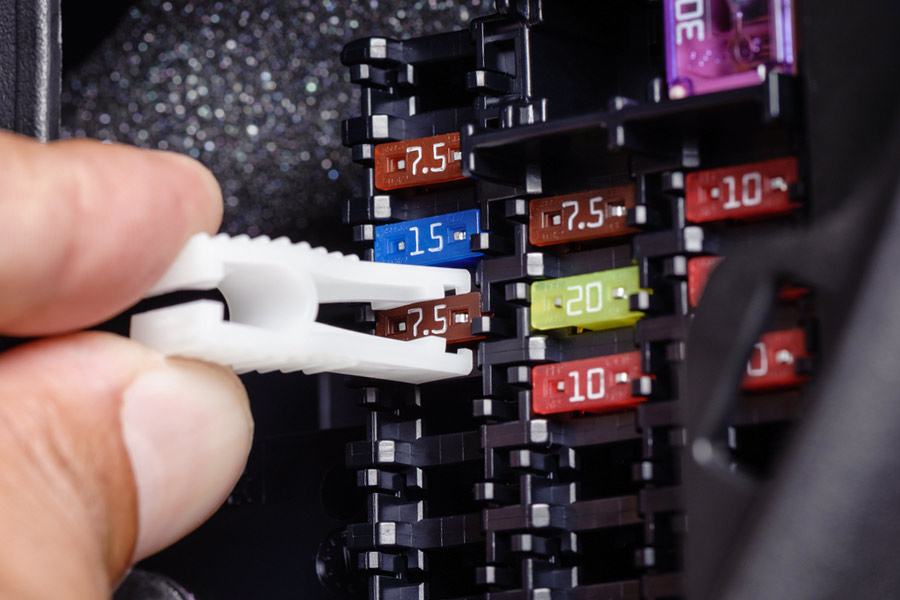Restoring Power from Blown Car Fuses
Car fuses are vehicle components designed to protect the electrical wiring within. A fuse prevents short-circuiting and overcurrent by disconnecting the circuit if the current levels are too high. There are a number of sizes and types of automotive fuses, each suited to specific electrical equipment or applications on the vehicle. Blade fuses are a common fuse used in vehicles.
Check for Blown Car Fuses
Fuses can last for a number of years, with some manufacturers making claims that their fuses can last for decades. Most often, fuses aren’t replaced unless they are blown. When a fuse blows, a corresponding part of the vehicle stops working. Since fuse connections are different across vehicles, consult the user’s manual for the location of the fuse box.
The box may contain a diagram showing the location and electrical components of the fuses. This can make it easier to find the one that has gone bad or is causing the electrical shortage in the car.
Use Visual Cues
A visual check during routine maintenance can show a fuse in working order. If you are looking for a blown or broken use, you can often see a melted or broken connection between the fuse and the wire.
Use a Multimeter
There are times when a visual inspection isn’t enough to check car fuses. In these cases, use a multimeter. Put the multimeter in continuity mode and attach the probes to either end of the fuse. The multimeter will signal an error message or signal a large resistance if there is no connection or continuity through the fuse.
You can also use the ohmmeter setting of your multimeter to check for resistance in the fuse. Remove the fuse from the housing before taking the reading again. A reading close to zero shows the fuse functioning properly, while a high reading and resistance means the fuse has blown.
Select the Right Car Fuses
While inexpensive and easy to replace, selecting the wrong replacement fuse can create additional problems and potentially damage other components. High current applications need larger fuses, so you need to select a fuse that matches the equipment’s current rating.
There are six leading types of blade fuses used in cars.
- Regular: a standard version and the second-largest type
- Maxi: largest fuse for high current applications
- Low-profile mini: small and compact with the terminals not extending beyond the fuse body
- Mini: similar profile to mini fuses but with longer terminals
- Micro2: smallest fuse available with a tall, thin shape
- Micro3: only fuse with three terminals instead of two
You can identify the amperage rating of a fuse by inspecting the rating notation near or at the top of the fuse. You can also consult that fuse diagram or use a fuse color coding chart. Different colors and sizes help tell the differences in the characteristics of fuses, and not all sizes work for an amperage rating.
Never Run Out of Car Fuses
With a supply of automotive fuses from, you will always have the right fuse on hand to restore power to a component. You can also shop from a range of other common body shop parts, making sure your mechanics have what they need for each car being repaired.

